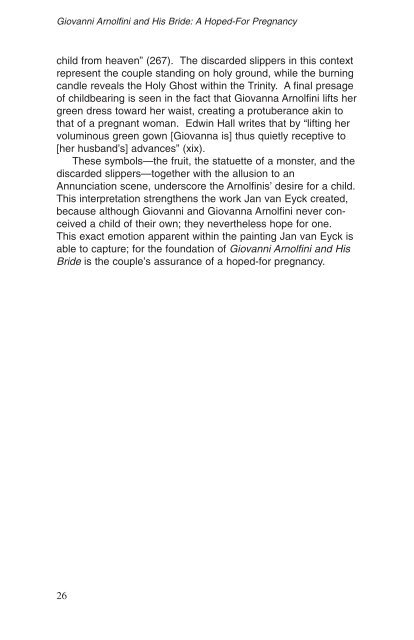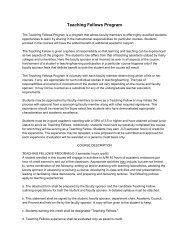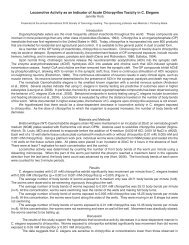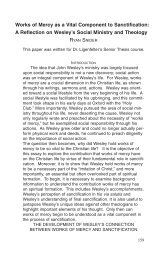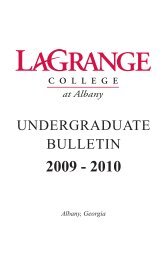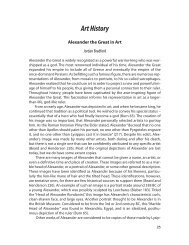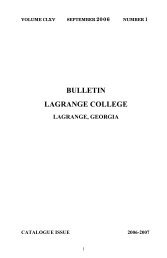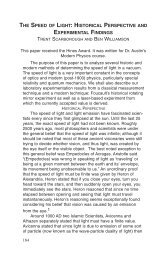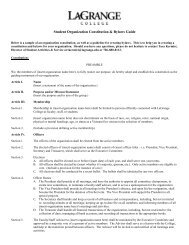Giovanni Arnolfini and His Bride
Giovanni Arnolfini and His Bride
Giovanni Arnolfini and His Bride
You also want an ePaper? Increase the reach of your titles
YUMPU automatically turns print PDFs into web optimized ePapers that Google loves.
<strong>Giovanni</strong> <strong>Arnolfini</strong> <strong>and</strong> <strong>His</strong> <strong>Bride</strong>: A Hoped-For Pregnancy<br />
child from heaven” (267). The discarded slippers in this context<br />
represent the couple st<strong>and</strong>ing on holy ground, while the burning<br />
c<strong>and</strong>le reveals the Holy Ghost within the Trinity. A final presage<br />
of childbearing is seen in the fact that Giovanna <strong>Arnolfini</strong> lifts her<br />
green dress toward her waist, creating a protuberance akin to<br />
that of a pregnant woman. Edwin Hall writes that by “lifting her<br />
voluminous green gown [Giovanna is] thus quietly receptive to<br />
[her husb<strong>and</strong>’s] advances” (xix).<br />
These symbols—the fruit, the statuette of a monster, <strong>and</strong> the<br />
discarded slippers—together with the allusion to an<br />
Annunciation scene, underscore the <strong>Arnolfini</strong>s’ desire for a child.<br />
This interpretation strengthens the work Jan van Eyck created,<br />
because although <strong>Giovanni</strong> <strong>and</strong> Giovanna <strong>Arnolfini</strong> never conceived<br />
a child of their own; they nevertheless hope for one.<br />
This exact emotion apparent within the painting Jan van Eyck is<br />
able to capture; for the foundation of <strong>Giovanni</strong> <strong>Arnolfini</strong> <strong>and</strong> <strong>His</strong><br />
<strong>Bride</strong> is the couple’s assurance of a hoped-for pregnancy.<br />
26


